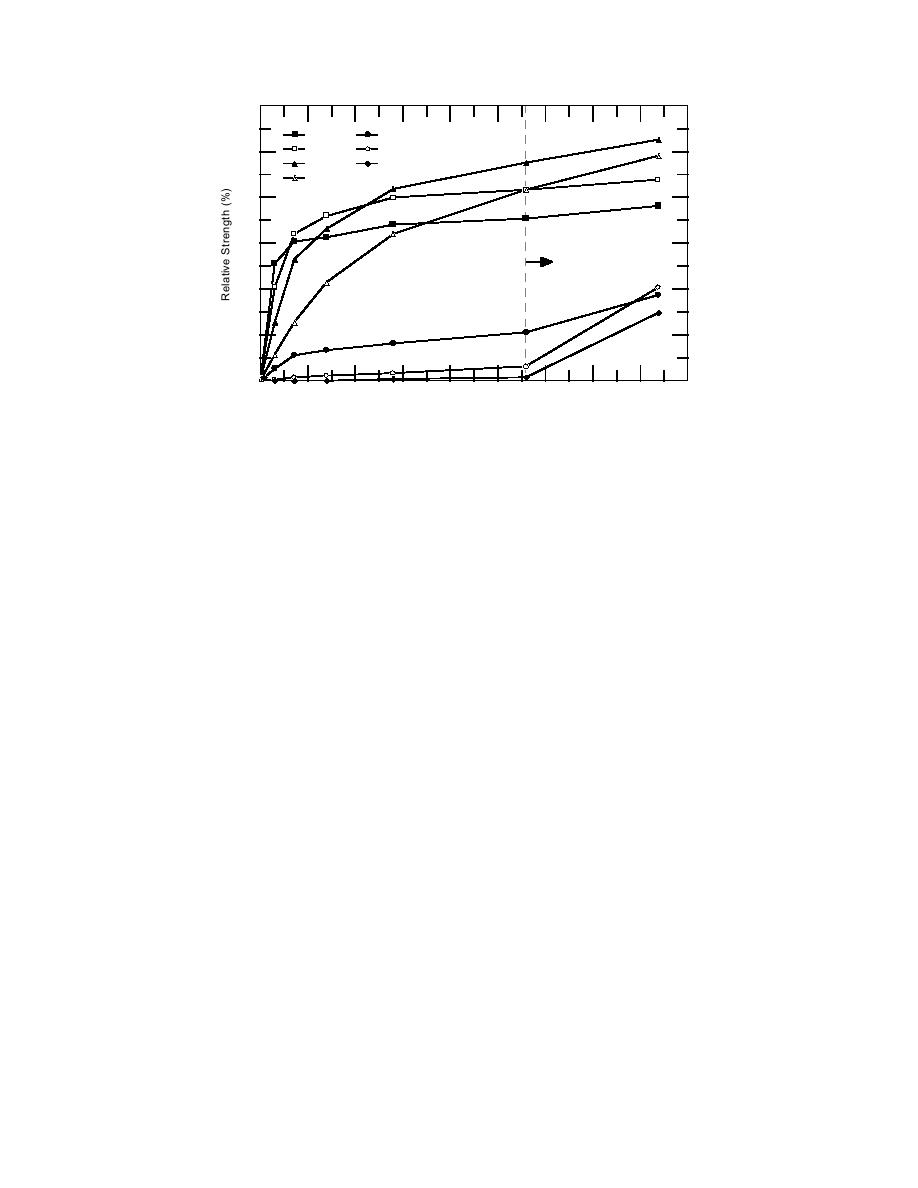
150
40C
5C
20C
10C
125
10C
20C
5C
100
75
20C Cure
50
25
0
0
10
20
30
40
50
60
70
80
90
Days
Figure 1. Effect of temperature on strength gain of normal concrete. All
strengths are referenced to the 28-day strength of the 20C concrete. The 40, 10
and 5C lines are based on relations presented by ACI. The other data are from
laboratory tests at CRREL.
lion every year on measures to protect fresh con-
Also, we decided that the initial low-tempera-
ture goal would be 5C, with 10C or perhaps
crete from freezing (Civil Engineering 1991).
20C being the ultimate objective, and that the
concrete cured at this low temperature should
Antifreeze admixtures
gain strength at least as rapidly as normal con-
Antifreeze admixtures are chemicals that
crete cured at 5C.
depress the freezing point of water and acceler-
Numerous chemical mixtures were investigat-
ate the hydration of cement. The literature cites
ed before one prototype formulation from each
numerous chemicals that can function as acceler-
company was selected for final testing: EY11
ators, calcium chloride being the most popular.
from Master Builders, Inc., and DP from W.R.
And there are many common substances that
Grace & Co. Because the admixtures are proprie-
dissolve in water and can serve as freezing point
tary, the chemicals used in them are not dis-
depressants. The challenge, however, is to find
closed.
chemicals that will work together and that will
Data from nearly two years of laboratory test-
not harm the concrete.
ing have not proven that the prototype admix-
Because no standards or acceptance criteria
tures harm the concrete. The concrete made with
are available for antifreeze admixtures, it was
necessary at the start of the CPAR projects to
each admixture passed standard freezethaw
tests, did not shrink excessively, did not contain
define such criteria. An antifreeze admixture
excess alkalis, and did not promote corrosion.
should:
Further, the admixtures promoted strength in
Depress the freezing point of water.
concrete cured at 5C that exceeded the strength
Promote strength gain of concrete at low
attained by normal concrete cured at 5C. The
temperatures.
Not interfere with concrete strength gain at
prototypes were ready for field evaluation.
normal temperatures.
Maintain the workability of the concrete.
FIELD EVALUATION
Achieve a reasonable concrete set time.
Produce freezethaw durable concrete.
Soo Locks
Not react with silica aggregate.
The Soo Area Office was replacing 39 sections
Not corrode steel.
of concrete that showed advanced freezethaw
Not adversely alter hydration products.
deterioration. They devoted four reinforced
Be cost effective.
slabs on grade, measuring 5.5 m wide by 6.1 m
2



 Previous Page
Previous Page
